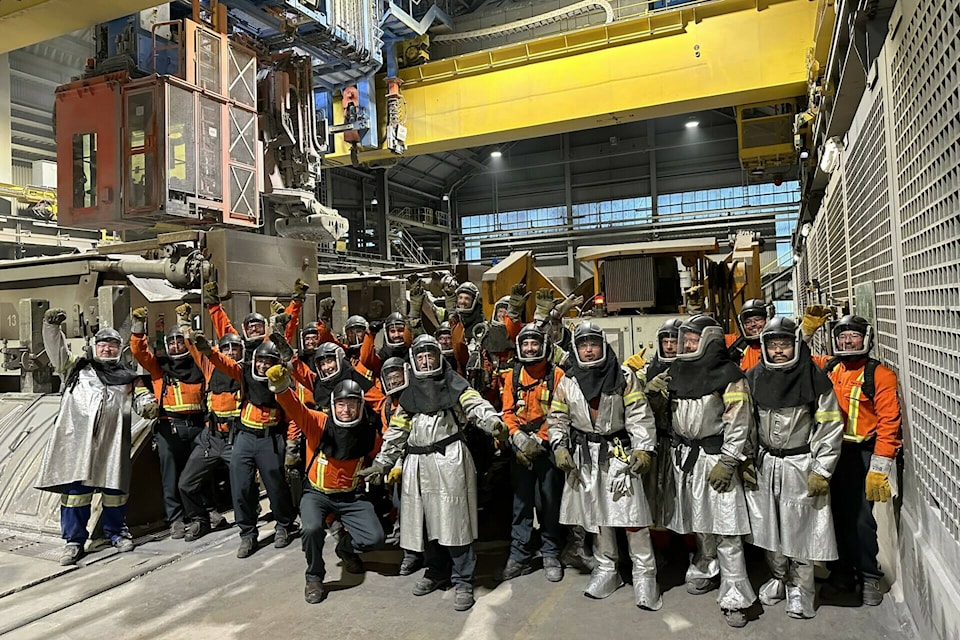After a prolonged setback from a strike in 2021, Rio Tinto’s aluminium smelter in Kitimat is finally back in full production after a challenging 17-month restart.
Rio Tinto general manager Simon Pascoe said the achievement is a significant win for both the community and his 1,100-member workforce.
“We’ve not just put ourselves back on where we left before the strike. We’re actually operating at our plant’s full nameplate capacity. It’s a testament to the dedication and hard work of every individual on the team.”
This is the first time since 2018 the smelter has reached full capacity, with the ability to produce 432,00 tonnes of aluminium per year.
Pascoe replaced Affonso Bizon last November, shortly after the resolution of the two-month strike in 2021 that reduced operations to just 25 per cent. The downgrade was necessary for safety considerations, but the journey from that point to full capacity was complex.
READ MORE: Rio Tinto BC Works General Manager departs
Restarting the smelter requires more than just flipping a switch, but the meticulous removal of solidified molten metal in the bottom of the pots and the restarting and rebuilding of those pots in a precise manner. It demands an abundance of patience, manpower and heavy machinery.
Pascoe compared the ramp-up process to adjusting a treadmill: “Two things are happening. We’ve got the incline up because we’re adding parts every week. So the intensity is increasing, but also the speed of how we have to operate increases. Where we’re at now is we’ve been able to hold the speed of the treadmill and we’ve been able to now reduce the incline because we’re now at full operation.”
The achievement is all the more remarkable given the workforce changes over the period, he said. With retirements and other departures, BC Works has hired 400 new employees from the Kitimat and Terrace areas, while inter-provincial and international experts were also tapped for crucial roles during ramp up.
READ MORE: Rio Tinto restart operations underway
According to a Rio Tinto report, the smelter added $532 million to the B.C. economy in 2022, with $254 million going to employees and $289 million toward BC suppliers and services. Roughly $2.2 million was handed out to various local causes as community contributions.
When asked about the financial toll of the strike, Pascoe wouldn’t disclose a dollar figure, and instead stressed its detrimental effects on all stakeholders.
“A strike is not good for anybody — not good for the employees, not good for the community, not good for business. We’re working very closely with our union, Unifor [Local 2301], and we have a very good relationship with the executive. I can pick up my cell phone on the weekend, after hours, and they can do the same for me. And I think that’s refreshing that they are feeling the commitment of Rio Tinto to bring it back, but equally the commitment to build that relationship.”
Rio Tinto is also gearing up for the smelter’s 70th anniversary next year.
“We’ve got a lot of good stuff ahead.We’re going to ramp up into stabilization, and stabilizing the processes, the systems, the training, and then into 2024 we will be moving into the optimization to make sure we will set that sustainable future for us to be globally competitive.”
He added with green energy from the Kemano power station and nearly $5 billion invested in modernizing technology, the smelter is aiming to become a leader in green aluminum production, meeting global demands in a tightening market.
“Our focus now is not just on aluminum but also on continuing to attract the best people to our region and establishing long-term foundations that make Kitimat a prime destination for top talent.”
